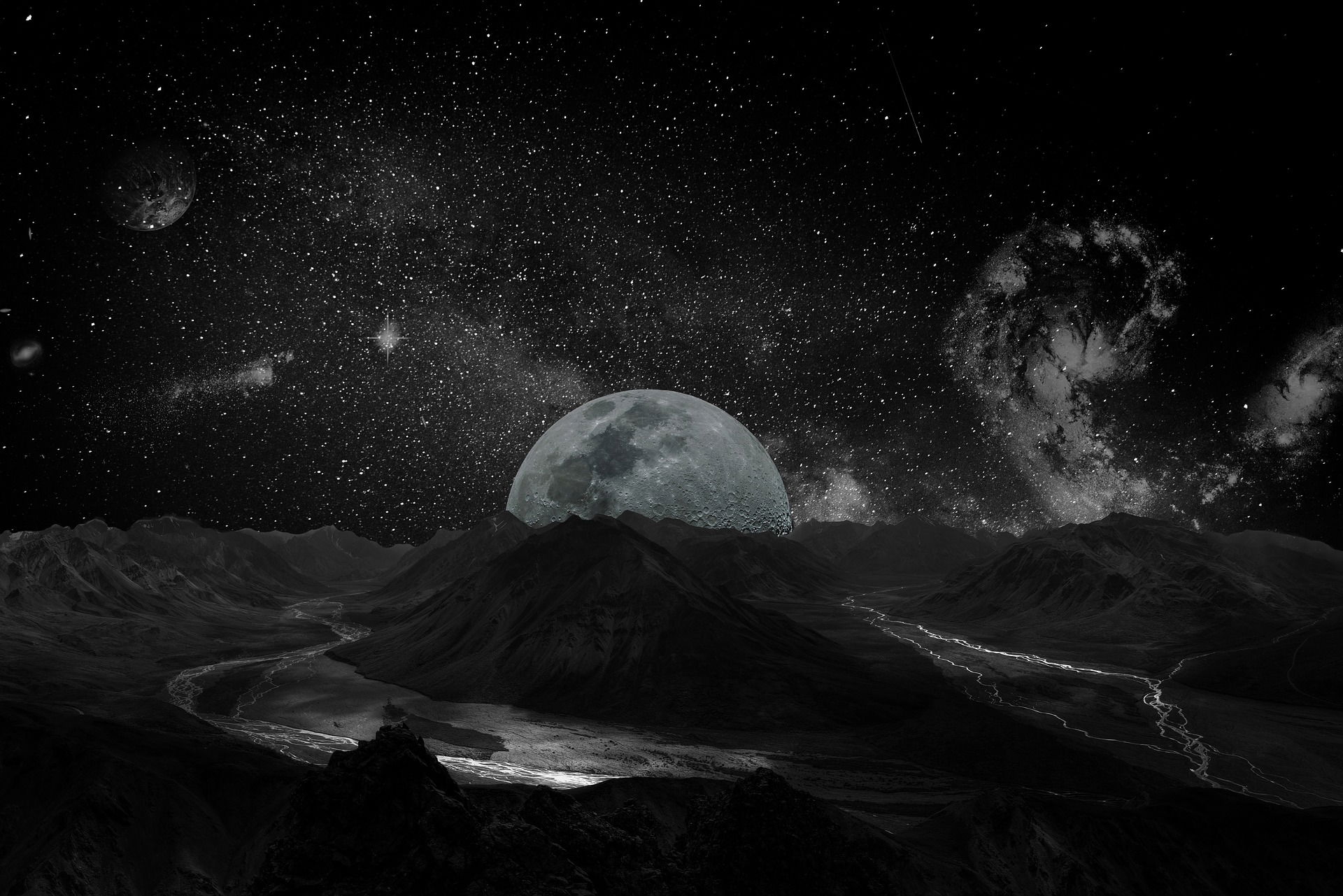The Dark Side of the Universe: Unsolved Cosmic Enigmas
The universe has long been a source of fascination, mystery, and wonder. From the twinkling stars in our night sky to the distant galaxies that stretch across the cosmos, the universe holds many secrets that continue to elude our understanding. In this article, we will delve into some of the most perplexing and enigmatic phenomena in the universe, often referred to as the "dark side" of the cosmos. These cosmic mysteries challenge the boundaries of our knowledge and drive scientists to seek answers that could revolutionize our understanding of the universe.

Dark Matter: The Invisible Influence
One of the most intriguing mysteries in the universe is the existence of dark matter. Dark matter is a mysterious, invisible substance that does not emit, absorb, or reflect light, making it undetectable by traditional telescopes. Its existence is inferred from its gravitational effects on visible matter, such as galaxies and galaxy clusters.
Key Questions and Challenges:
- What is Dark Matter?: Despite its pervasive influence on the universe, the true nature of dark matter remains unknown. Is it composed of undiscovered particles, or does it require a modification of our understanding of gravity itself?
- How Much Dark Matter is There?: Scientists estimate that dark matter makes up about 27% of the universe's total mass and energy, while ordinary matter (the stuff we see) constitutes just 5%. Determining the precise amount of dark matter and mapping its distribution is an ongoing challenge.
Dark Energy: The Cosmic Accelerator
Dark energy is another cosmic enigma that has puzzled astronomers for decades. Unlike dark matter, dark energy is not a form of matter; instead, it is a mysterious force that seems to be accelerating the expansion of the universe.
Key Questions and Challenges:
- What is Dark Energy?: The nature of dark energy is one of the most significant questions in cosmology. Is it a "cosmological constant" as proposed by Albert Einstein, or is it a dynamic field that evolves over time?
- Understanding Cosmic Acceleration: Scientists are working to understand why the expansion of the universe is accelerating rather than slowing down due to gravity, as one might expect. Dark energy is the leading candidate to explain this phenomenon, but its exact properties are still unknown.
Black Holes: The Cosmic Abyss
Black holes are perhaps the most enigmatic objects in the universe. These regions of spacetime exhibit such intense gravitational pull that nothing, not even light, can escape from them. While we have made significant discoveries about black holes in recent years, they continue to pose profound questions.
Key Questions and Challenges:
- What Happens Inside a Black Hole?: The nature of the singularity at the center of a black hole is a mystery. Our current understanding of physics breaks down in such extreme conditions, and a theory of quantum gravity is needed to describe what happens inside.
- Black Hole Information Paradox: The concept of Hawking radiation suggests that black holes can emit radiation and eventually evaporate. This challenges the principle of information conservation, and resolving this paradox is a significant challenge in theoretical physics.
The Fate of the Universe
Cosmologists are also grappling with the ultimate fate of the universe. Will it continue to expand indefinitely, leading to a "heat death" where all matter and energy become evenly distributed and unavailable for further processes? Or will some other cosmic destiny unfold?
Key Questions and Challenges:
- Big Bang and Beyond: Understanding the initial moments of the universe, the processes that led to the Big Bang, and what might come after are among the most profound questions in cosmology.
- Cosmic Topology: Researchers are investigating the large-scale geometry of the universe. Could it be a finite or closed universe, and what implications would this have for its ultimate fate?
Sources of Cosmic Radiation
Cosmic rays are high-energy particles from space that constantly bombard our planet. While many cosmic rays originate from the sun, there are also mysterious and ultra-high-energy cosmic rays of unknown origin that can be millions of times more energetic.
Key Questions and Challenges:
- Origin of Ultra-High-Energy Cosmic Rays: The sources of these incredibly energetic particles remain unknown. Identifying their origins could provide insights into the most extreme environments in the universe.
- Cosmic Ray Composition: Understanding the composition and behavior of cosmic rays is essential for space exploration and understanding the cosmic processes that shape our universe.
Dark Matter Detection
Efforts to detect and understand dark matter are ongoing. Scientists are conducting experiments deep underground and in space to search for dark matter particles.
Key Questions and Challenges:
- Direct Detection: Can we directly detect dark matter particles and measure their properties? Experiments such as the Large Underground Xenon (LUX) and the XENON Collaboration aim to do just that.
- Indirect Detection: Are there indirect ways to observe the effects of dark matter? Instruments like the Alpha Magnetic Spectrometer (AMS-02) on the International Space Station are searching for signals of dark matter annihilation or decay.
Dark Energy Exploration
The nature of dark energy remains one of the most pressing questions in cosmology. Scientists are using various methods, including studying the cosmic microwave background and galaxy surveys, to better understand this mysterious force.
Key Questions and Challenges:
- Measuring Dark Energy: Can we precisely measure the properties of dark energy and determine whether it is a constant or evolving field? Projects like the Dark Energy Survey and the Large Synoptic Survey Telescope (LSST) are designed to answer these questions.
- Cosmic Microwave Background: The Planck satellite and upcoming missions aim to study the cosmic microwave background radiation in detail to understand its role in the expansion of the universe.
Black Hole Observations
Recent advancements in technology have allowed scientists to observe black holes with unprecedented detail. The Event Horizon Telescope (EHT), for example, captured the first-ever image of a black hole's event horizon in 2019.
Key Questions and Challenges:
- Studying Black Hole Properties: Ongoing observations and simulations seek to unravel the mysteries of black holes, including their behavior, accretion disks, and the dynamics of matter and energy near them.
- Testing General Relativity: Black holes provide extreme environments for testing the principles of general relativity and exploring potential deviations from Einstein's theory.

Conclusion
The dark side of the universe is a realm of profound mysteries that continue to captivate the curiosity of scientists and astronomers. These cosmic enigmas challenge our understanding of physics, space, and time, and solving them could revolutionize our knowledge of the universe. As technology advances and our exploration of the cosmos continues, we inch closer to unraveling these mysteries, shedding light on the dark side of the universe and expanding the boundaries of human knowledge.